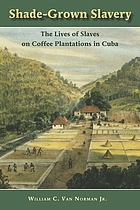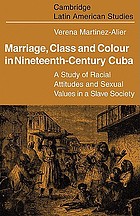
Recent scholarship on colonial Cuba has challenged the sugar-centric and male-normative tendencies of the prevailing historical narratives. One group of scholars has examined slavery in times and economic contexts other than nineteenth-century sugar plantations. Certainly, even before the rise of sugar as Cuba’s dominant crop at the turn of the nineteenth century, slavery existed in a variety of forms, as a growing number of scholars have demonstrated. Alejandro de la Fuente’s Havana and the Atlantic in the Sixteenth Century, for example, highlights the diverse economic roles fulfilled by enslaved Africans in Havana’s precarious early history. Among the most influential works on early Cuban slavery is The Virgin, the King, and the Royal Slaves of El Cobre by María Elena Díaz, which offers readers a fascinating look into the ways eastern Cuba’s royal slaves employed the special legal category of their servitude to lay claim to certain rights before the consolidation of Cuba’s slave society. In a longer durée study, Guadalupe García charts how colonial authorities in Havana regulated urban space to produce racial exclusion starting in the sixteenth century in Beyond the Walled City: Colonial Exclusion in Havana.
Other scholars have helped dismantle the conflation of slavery and nineteenth-century sugar plantations by studying slavery in other areas of the long-nineteenth-century economy, including tobacco and coffee cultivation and urban slavery. Theresa A. Singleton’s Slavery behind the Wall: An Archaeology of a Cuban Coffee Plantation and William C. Van Norman Jr.’s Shade-Grown Slavery: The Lives of Slaves on Coffee Plantations in Cuba offer excellent counterpoints to the heavily sugar-centric scholarship on Cuban slavery. For her part, Singleton explores how Cuban planters used the built environment to control their slaves through an archaeological investigation of a Cuban coffee plantation. Van Norman explains how enslaved peoples’ lives differed on coffee plantations from sugar plantations, including greater possibilities of freedom and reproduction. Charlotte Cosner’s The Golden Leaf: How Tobacco Shaped Cuba and the Atlantic World similarly highlights certain aspects of slavery on tobacco plantations.
A significant challenge to the conventional male-centered approach to studying slavery in Cuba came with the rise of work on women and gender. While the vast majority of scholarship on slavery still focuses on supposedly universal (male) subjects, the publication of the still-unparalleled 1974 monograph Marriage, Class and Colour in Nineteenth-Century Cuba: A Study of Racial Attitudes and Sexual Values in a Slave Society, by Verena Martínez-Alier, (now Stolcke) charted a new path for scholarship on slavery, with greater attention to women and gender. Stolcke foregrounded the importance of honor as a critical concept, binding race and sex together to enforce a uniquely gendered racial hierarchy in that slave society. In part basing her research in Cuba, Ann Twinam builds on this argument by unveiling the strategies by which elite families preserved their public reputations of honor despite private indiscretions in Public Lives, Private Secret: Gender, Honor, Sexuality, and Illegitimacy in Colonial Spanish America. Twinam’s Purchasing Whiteness: Pardos, Mulattos, and the Quest for Social Mobility in the Spanish Indies likewise explores constructions of honor through petitions for official whiteness levied by people of African descent to purchase their public, honorable status.
Other books examine how gender norms buttressed the racial hierarchy. In Women and Slavery in Nineteenth-Century Colonial Cuba, Sarah L. Franklin examines the role of patriarchy in Cuba’s slave society by charting the gendered roles white and black women occupied. In Afro-Cuban Costumbrismo: From Plantations to the Slums, Rafael Ocasio shows that even in literature on Cuban slavery, highly gendered types of black characters enforce dichotomous visions of what it meant to be black. These works illustrate the centrality of gender to social hierarchy in Cuba’s slave society, challenging the male-normative perspective that has typically characterized scholarship in the field.
 Shade grown slavery : the lives of slaves on coffee plantations in Cuba
by
Shade grown slavery : the lives of slaves on coffee plantations in Cuba
by
 Marriage, class and colour in nineteenth-century Cuba; a study of racial attitudes and sexual values in a slave society
by
Marriage, class and colour in nineteenth-century Cuba; a study of racial attitudes and sexual values in a slave society
by